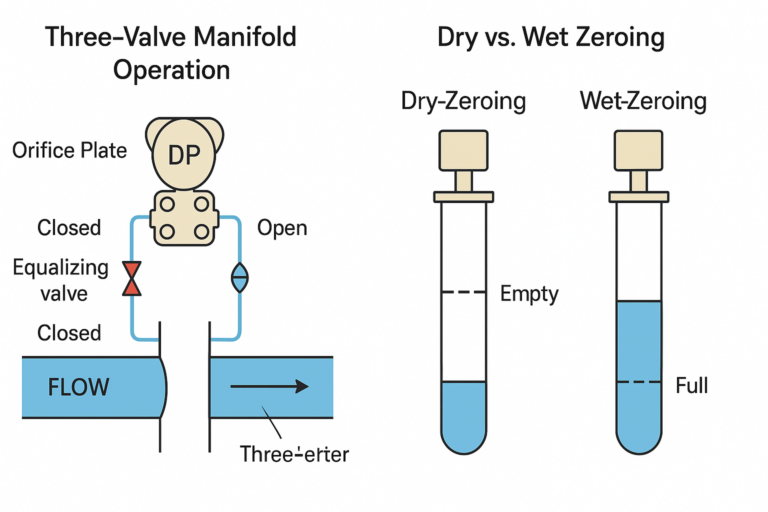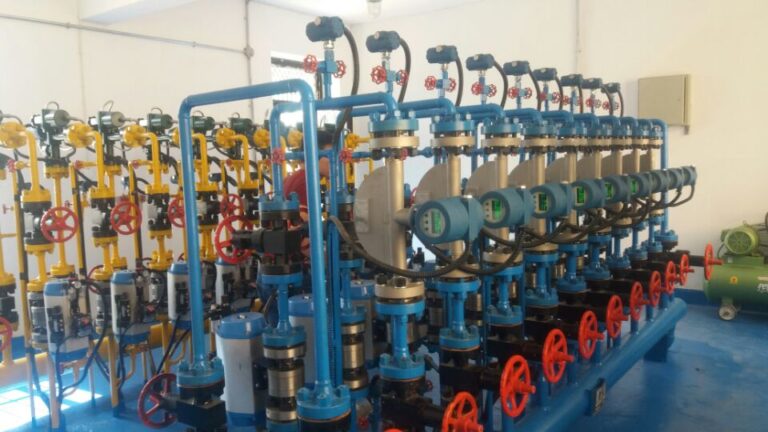When a plant is shut down, it is expected that all flowmeters should indicate zero flow. However, it’s common to encounter false flow readings across various types of flowmeters. This article explains the possible causes and provides detailed handling methods for different types of flowmeters, ensuring correct zero indication and avoiding potential misjudgments.

1. Differential Pressure (DP) Flowmeters
(e.g., Orifice Plate, Nozzle, Venturi Tube)
Common Issue:
Even after shutdown, DP flow transmitters continue to display flow values due to residual pressure in impulse lines or zero drift in the transmitter.
Resolution Steps:
Step 1: Operate the Three-Valve Manifold
Close the high-pressure side valve (positive side).
Open the equalizing valve to balance the pressure across both sides.
Close the low-pressure side valve (negative side).
Open the vent plugs on the transmitter to drain any residual pressure or liquid.
⚠️ This step ensures both pressure chambers of the diaphragm sensor are under atmospheric pressure and prevents pressure-induced drift.
Step 2: Check and Adjust Zero Point
Observe the transmitter output. If zero drift is present, use a HART communicator or handheld terminal to perform manual zero calibration.
Step 3: Return to Normal Operation
Reinstall and secure the vent plugs.
Open both high- and low-pressure valves.
Open the equalizing valve temporarily to allow equal liquid levels on both sides.
Close the equalizing valve after stabilization.
At this point, the transmitter should display zero flow accurately and be ready for normal operation.

2. Vortex, Electromagnetic, and Coriolis Mass Flowmeters
Common Issue:
After the plant stops, these flowmeters should read zero, but often they show non-zero values due to residual process conditions or signal drift.
Zero Calibration Methods:
A. Dry Calibration (Dry-Zero Method)
Applicable when the pipeline is completely empty.
Conduct zero calibration under air-filled or vacuum conditions.
Recommended when it’s safe and confirmed that there is no process fluid inside the pipe.
B. Wet Calibration (Wet-Zero Method)
Applied when the pipe is full of liquid, but there is no actual flow.
Ensure that the fluid is static and the pipe remains fully filled during calibration.
This method typically results in more accurate zeroing than dry calibration because it reflects the actual installation environment.
✅ Most modern electromagnetic and Coriolis meters offer auto-zero functions, which can be triggered via local interface or control system commands.

Conclusion
Incorrect zero readings during plant shutdown can mislead operators and trigger unnecessary alarms or troubleshooting. Proper handling methods—including mechanical isolation, pressure release, and precise zero calibration—ensure that flowmeters return to accurate baseline readings.
Recommendations:
Always perform zero checks after shutdown, especially for differential pressure systems.
Maintain clean and dry impulse lines to prevent signal interference.
Use wet-zero calibration where applicable to improve measurement accuracy.
Keep a routine maintenance log for all flowmeters to track calibration and performance.
